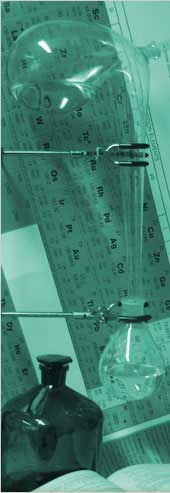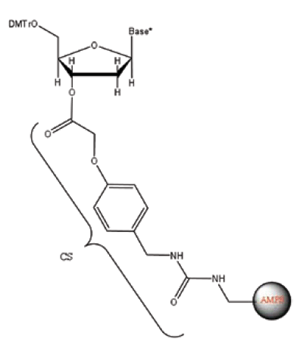 |
 |
|
|
|||
 |
|||
2’-Deoxynucleoside bound Solid Supports (CS-supports)The CS Solid Supports incorporate a new linker that allows 3–4 times faster cleavage of target oligonucleotide off the solid phase under the the regular cleavage/deprotection conditions. This feature make them indispensable, when Ultra- FAST Deprotection ULtraMILD Deprotection is necessary in order to insure the convenient isolation of modified and dye labelled oligonucleotides that appear not stable to deprotection with ammonium hydroxide or AMA at regular conditions (e.g. oligonucleotides, labled with Cy5 or Cy 5.5 dyes)The novel CS supports appear absolutely similar, if not better than the conventional nucleoside bound supports (incorporating the traditional succinate linker) in terms of performance as solid phases for Oligonucleotide synthesis. Noteworthy, the precise loading of the new linker on the solid phase is much easier to achieve when using the new Carbomoylation procedure, developed by Metkinen Chemistry (U.S. Patent Application Serial No 60/854,721 and International Patent Application No. PCT/FI2007/050575).  B*= bzAde, Thy, bzCyt, acCyt, ibGua; AMPS = macroporous aminomethyl polystyrene CS –Supports: 2’-Deoxynucleoside Bound Solid Supports for DNA synthesis Catalogue number: 103-31 Description: Chemically modified Macroporous Aminomethyl Polystyrene. White to off-white powder. Storage of dry compound: 1 year at +4ºC Loading: standard - 30 - 40 µmol/g; custom loading – from 5 to 80 ìmol/g. Oligosynthesis on CS supports: perform oligonucleotide assembly, using standard DNA protocols, recommended by your synthesizer manufacturer. Cleavage: Cleave the oligo from the support using concentrated aqueous ammonium hydroxide at room temperature for 30 minutes. Alternatively, cleave the oligo from the support using concentrated aqueous ammonium hydroxide – 40 % aqueous methylamine (AMA) at room temperature for 15 minutes. Deprotection AFTER Cleavage: Following the cleavage step, proceed with oligonucleotide deprotection using the conditions appropriate for removal of the protecting groups on the nucleobases. Price and Ordering Information |
|||